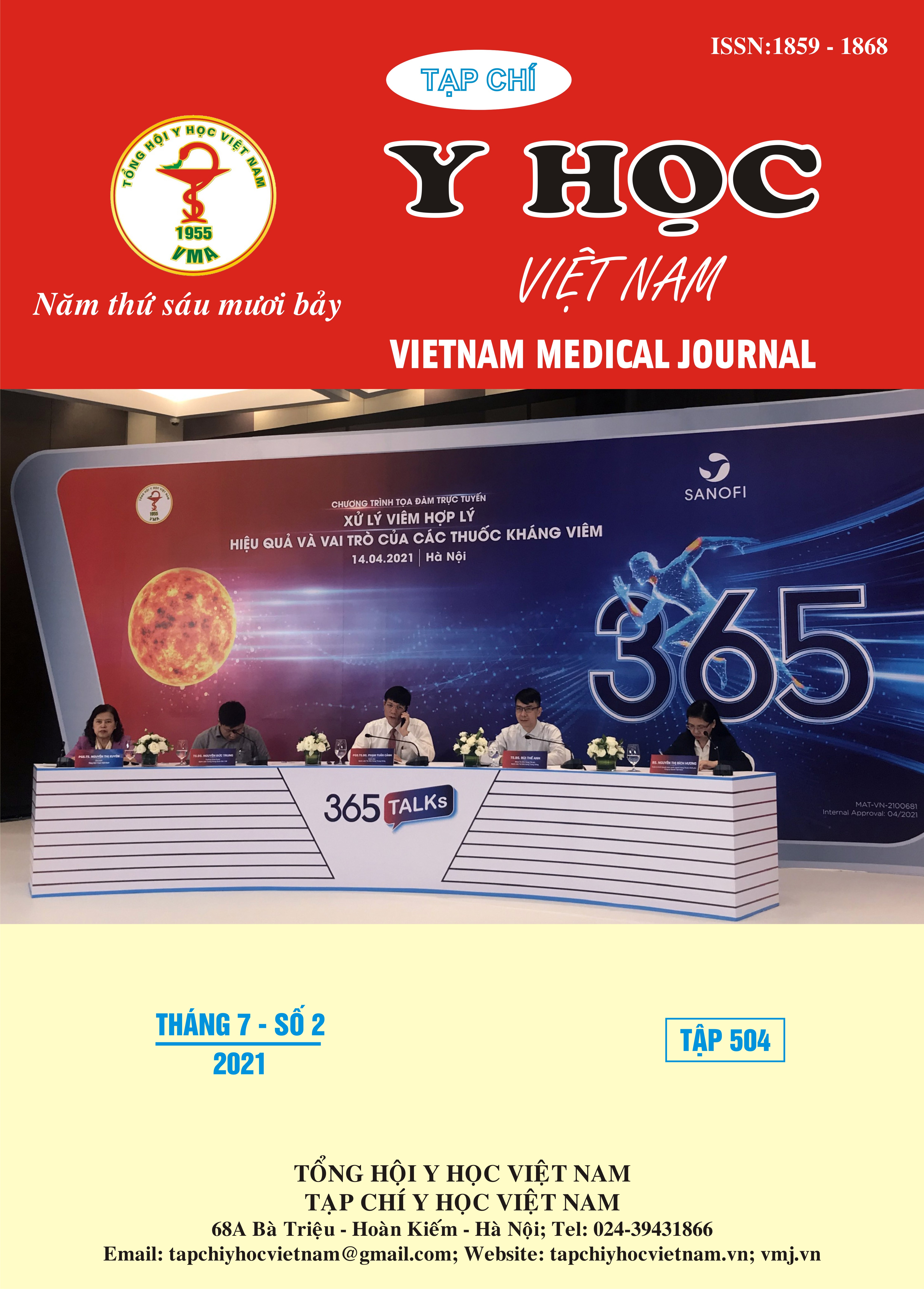EVALUATION OF PRONUNCIATION CHANGE IN CHILDREN WITH GRADE III OR IV ADENOID HYPERTROPHY
Main Article Content
Abstract
Adenoid hypertrophy reduces the flow of air through the nose during pronunciation, causing resonance disorder, children will have difficulty pronouncing the nasal sounds /m/, /n/, /ŋ/, in Vietnamese are /m/,/n/,/ng/,/nh/. Hypertrophic adenoids may cause hyponasality by obliterating the nasopharynx or obstructing the choanae. This study was conducted to evaluate pronunciation changes in 4-6 years old children with Adenoid hypertrophy stage III, IV. The study was conducted on 36 children 4 to 6 years old who underwent adenoidectomy at the Vietnam National Children's hospital from August 2020 to the end of August 2021. The results showed that 61.1% were males and 38.9% were female; children aged 4 to 6 years old accounted for 11.1%, 47.6% and 41.3%, respectively. The main reason for adenoidectomy was snoring at38.9%, recurrent otitis media 27.8%, closed nasal voice 19.3%, and sleep apnea 13.9%. On physical examination, the patient did not have acute nasopharyngitis. The percentage of adenoid hypertrophy stage III, IV were 80.6% and 19.4%. Assessment of pronunciation before adenoidectomy: unable to pronounce /m/ 21.3%, /n/ 34.6%, /ng/ 59.6%, /nh/ 61.2%; 2 weeks after adenoidectomy: unable to pronounce sounds /m/ 5.6%,/n/ 8.3%, /ng/11.1%, /nh/ 8.3%.Assessment of sound quality through analysis of neutral tones is the vowel /a/. Tones before adenoidectomy were Shimmer 3,6%, Jitter 1.6%, HNR 21.005 dB, respectively; F0 135 ± 1.7Hz. After adenoidectomy, Shimmer 3.0%, Jitter 0.9%, HNR 17.943 dB; F0 119 ± 1.2 Hz. There was a significant improvement in Jitter and HNR, suggesting the effectiveness in improving the voice of children with adenoid hypertrophy grade III-IV after adenoidectomy.
Article Details
Keywords
Adenoid hypertrophy, hyponasality, Shimmer index, Jitter, HNR, formants
References
2. L. Pereira, J. Monyror, F. T. Almeida và các cộng sự. (2018), "Prevalence of adenoid hypertrophy: A systematic review and meta-analysis", Sleep Med Rev, 38, tr. 101-112.
3. J. H. Cho, D. H. Lee, N. S. Lee và các cộng sự. (1999), "Size assessment of adenoid and nasopharyngeal airway by acoustic rhinometry in children", J Laryngol Otol, 113(10), tr. 899-905.
4. Sally K. Gallena (2007), Voice and Laryngeal Disorders: A Problem-based Clinical Guide with Voice Samples, Mosby Elsevier.
5. L. J. Wallner, B. J. Hill, W. Waldrop và các cộng sự. (1968), "Voice changes following adenotonsillectomy. A study of velar function by cinefluorography and video tape", Laryngoscope, 78(8), tr. 1410-8.
6. Y. Finkelstein, G. Berger, A. Nachmani và các cộng sự. (1996), "The functional role of the adenoids in speech", Int J Pediatr Otorhinolaryngol, 34(1-2), tr. 61-74.
7. Hà Lan Phương (2011), Nghiên cứu hình thái nhĩ đồ ở trẻ viêm V.A. quá phát có chỉ định phẫu thuật, Luận văn Thạc sỹ Y học, Trường Đại học Y Hà Nội, Hà Nội.
8. Nghĩa Nguyễn Trung Nghĩa (2017), Đánh giá kết quả điều trị phẫu thuật cắt amiđan và nạo V.A đồng thời ở trẻ em, Luận văn cao học, Trường Đại học Y Dược Huế.
9. P. Cassano, M. Gelardi, M. Cassano và các cộng sự. (2003), "Adenoid tissue rhinopharyngeal obstruction grading based on fiberendoscopic findings: a novel approach to therapeutic management", Int J Pediatr Otorhinolaryngol, 67(12), tr. 1303-9.
10. Spyros Cardoso Dimatos, Luciano Rodrigues Neves, Jéssica Monique Beltrame và các cộng sự. (2016), "Impact of adenotonsillectomy on vocal emission in children", Brazilian Journal of Otorhinolaryngology, 82(2), tr. 151-158.


